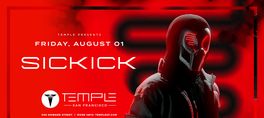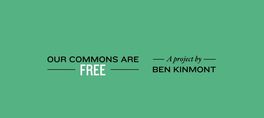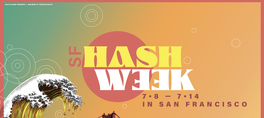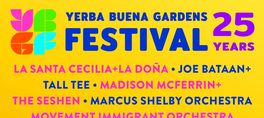Discover the life and career of modern artist Bernice "Bingo" Bing (1936-1998), a San Francisco original.
Into View: Bernice Bing celebrates the museum's acquisition of 20 paintings and works on paper that shine a light on an important local Asian American artist who has only recently gained broad recognition for her achievements. These works reveal the evolution of Bing's remarkable practice, from paintings of the 1950s and 1960s that straddle Abstract Expressionism and figuration to work from the 1980s and 1990s that explores a synthesis of Zen calligraphy and Western abstraction.
Born in San Francisco's Chinatown in 1936, Bernice "Bingo" Bing (1936-1998) spent her childhood bouncing between an orphanage and foster homes. She attended California College of Arts and Crafts (now California College of the Arts), where she studied with Richard Diebenkorn and Japanese painter and theorist Saburo Hasegawa, who introduced Bing to Zen Buddhism, Chinese philosophers, and traditional calligraphy. She completed her B.F.A. and earned her M.F.A. at the California School of Fine Arts (now the San Francisco Art Institute), where she studied with painters such as Elmer Bischoff and became enmeshed in the city's Beat Era art scene.
In the 1980s, Bing's work began to display the influence of her Buddhist practice and of traditional Chinese art, stretching the boundaries of Modernism. In 1984, she spent three months in China studying calligraphy and traditional ink landscape painting. Her work following that formative trip evolved toward a synthesis of calligraphy and abstraction, and she often chose titles for her paintings that reference the Lotus Sutra. Her last major work, Epilogue (1990-1995), serves as a resume of her artistic development; abstract clusters, some suggesting figurative forms and others calligraphic sources, are arranged in a 24-foot-long linear composition that reads like the unrolling of a handscroll.
The exhibition shows how Bing's perseverance as a queer Asian American woman fueled her achievements as a catalyst in the Bay Area cultural scene during the second half of the 20th century.
Into View: Bernice Bing is the first in an ongoing series of collection exhibitions championing the work of under-recognized modern artists and will be on view through May 7, 2023.
Image Credit: A Lady and a Road Map, 1962, by Bernice Bing (American, 1936-1998). Oil on canvas. Asian Art Museum of San Francisco, Museum purchase, 2020.26. © Estate of the Artist. Photograph © Asian Art Museum.
show less
Into View: Bernice Bing celebrates the museum's acquisition of 20 paintings and works on paper that shine a light on an important local Asian American artist who has only recently gained broad recognition for her achievements. These works reveal the evolution of Bing's remarkable practice, from paintings of the 1950s and 1960s that straddle Abstract Expressionism and figuration to work from the 1980s and 1990s that explores a synthesis of Zen calligraphy and Western abstraction.
Born in San Francisco's Chinatown in 1936, Bernice "Bingo" Bing (1936-1998) spent her childhood bouncing between an orphanage and foster homes. She attended California College of Arts and Crafts (now California College of the Arts), where she studied with Richard Diebenkorn and Japanese painter and theorist Saburo Hasegawa, who introduced Bing to Zen Buddhism, Chinese philosophers, and traditional calligraphy. She completed her B.F.A. and earned her M.F.A. at the California School of Fine Arts (now the San Francisco Art Institute), where she studied with painters such as Elmer Bischoff and became enmeshed in the city's Beat Era art scene.
In the 1980s, Bing's work began to display the influence of her Buddhist practice and of traditional Chinese art, stretching the boundaries of Modernism. In 1984, she spent three months in China studying calligraphy and traditional ink landscape painting. Her work following that formative trip evolved toward a synthesis of calligraphy and abstraction, and she often chose titles for her paintings that reference the Lotus Sutra. Her last major work, Epilogue (1990-1995), serves as a resume of her artistic development; abstract clusters, some suggesting figurative forms and others calligraphic sources, are arranged in a 24-foot-long linear composition that reads like the unrolling of a handscroll.
The exhibition shows how Bing's perseverance as a queer Asian American woman fueled her achievements as a catalyst in the Bay Area cultural scene during the second half of the 20th century.
Into View: Bernice Bing is the first in an ongoing series of collection exhibitions championing the work of under-recognized modern artists and will be on view through May 7, 2023.
Image Credit: A Lady and a Road Map, 1962, by Bernice Bing (American, 1936-1998). Oil on canvas. Asian Art Museum of San Francisco, Museum purchase, 2020.26. © Estate of the Artist. Photograph © Asian Art Museum.
Discover the life and career of modern artist Bernice "Bingo" Bing (1936-1998), a San Francisco original.
Into View: Bernice Bing celebrates the museum's acquisition of 20 paintings and works on paper that shine a light on an important local Asian American artist who has only recently gained broad recognition for her achievements. These works reveal the evolution of Bing's remarkable practice, from paintings of the 1950s and 1960s that straddle Abstract Expressionism and figuration to work from the 1980s and 1990s that explores a synthesis of Zen calligraphy and Western abstraction.
Born in San Francisco's Chinatown in 1936, Bernice "Bingo" Bing (1936-1998) spent her childhood bouncing between an orphanage and foster homes. She attended California College of Arts and Crafts (now California College of the Arts), where she studied with Richard Diebenkorn and Japanese painter and theorist Saburo Hasegawa, who introduced Bing to Zen Buddhism, Chinese philosophers, and traditional calligraphy. She completed her B.F.A. and earned her M.F.A. at the California School of Fine Arts (now the San Francisco Art Institute), where she studied with painters such as Elmer Bischoff and became enmeshed in the city's Beat Era art scene.
In the 1980s, Bing's work began to display the influence of her Buddhist practice and of traditional Chinese art, stretching the boundaries of Modernism. In 1984, she spent three months in China studying calligraphy and traditional ink landscape painting. Her work following that formative trip evolved toward a synthesis of calligraphy and abstraction, and she often chose titles for her paintings that reference the Lotus Sutra. Her last major work, Epilogue (1990-1995), serves as a resume of her artistic development; abstract clusters, some suggesting figurative forms and others calligraphic sources, are arranged in a 24-foot-long linear composition that reads like the unrolling of a handscroll.
The exhibition shows how Bing's perseverance as a queer Asian American woman fueled her achievements as a catalyst in the Bay Area cultural scene during the second half of the 20th century.
Into View: Bernice Bing is the first in an ongoing series of collection exhibitions championing the work of under-recognized modern artists and will be on view through May 7, 2023.
Image Credit: A Lady and a Road Map, 1962, by Bernice Bing (American, 1936-1998). Oil on canvas. Asian Art Museum of San Francisco, Museum purchase, 2020.26. © Estate of the Artist. Photograph © Asian Art Museum.
read more
Into View: Bernice Bing celebrates the museum's acquisition of 20 paintings and works on paper that shine a light on an important local Asian American artist who has only recently gained broad recognition for her achievements. These works reveal the evolution of Bing's remarkable practice, from paintings of the 1950s and 1960s that straddle Abstract Expressionism and figuration to work from the 1980s and 1990s that explores a synthesis of Zen calligraphy and Western abstraction.
Born in San Francisco's Chinatown in 1936, Bernice "Bingo" Bing (1936-1998) spent her childhood bouncing between an orphanage and foster homes. She attended California College of Arts and Crafts (now California College of the Arts), where she studied with Richard Diebenkorn and Japanese painter and theorist Saburo Hasegawa, who introduced Bing to Zen Buddhism, Chinese philosophers, and traditional calligraphy. She completed her B.F.A. and earned her M.F.A. at the California School of Fine Arts (now the San Francisco Art Institute), where she studied with painters such as Elmer Bischoff and became enmeshed in the city's Beat Era art scene.
In the 1980s, Bing's work began to display the influence of her Buddhist practice and of traditional Chinese art, stretching the boundaries of Modernism. In 1984, she spent three months in China studying calligraphy and traditional ink landscape painting. Her work following that formative trip evolved toward a synthesis of calligraphy and abstraction, and she often chose titles for her paintings that reference the Lotus Sutra. Her last major work, Epilogue (1990-1995), serves as a resume of her artistic development; abstract clusters, some suggesting figurative forms and others calligraphic sources, are arranged in a 24-foot-long linear composition that reads like the unrolling of a handscroll.
The exhibition shows how Bing's perseverance as a queer Asian American woman fueled her achievements as a catalyst in the Bay Area cultural scene during the second half of the 20th century.
Into View: Bernice Bing is the first in an ongoing series of collection exhibitions championing the work of under-recognized modern artists and will be on view through May 7, 2023.
Image Credit: A Lady and a Road Map, 1962, by Bernice Bing (American, 1936-1998). Oil on canvas. Asian Art Museum of San Francisco, Museum purchase, 2020.26. © Estate of the Artist. Photograph © Asian Art Museum.
show less
Date/Times:
Asian Art Museum
146 Upcoming Events
200 Larkin Street, San Francisco, CA 94102
The Best Events
Every Week in Your Inbox
From Our Sponsors
UPCOMING EVENTS
Great suggestion! We'll be in touch.
Event reviewed successfully.









